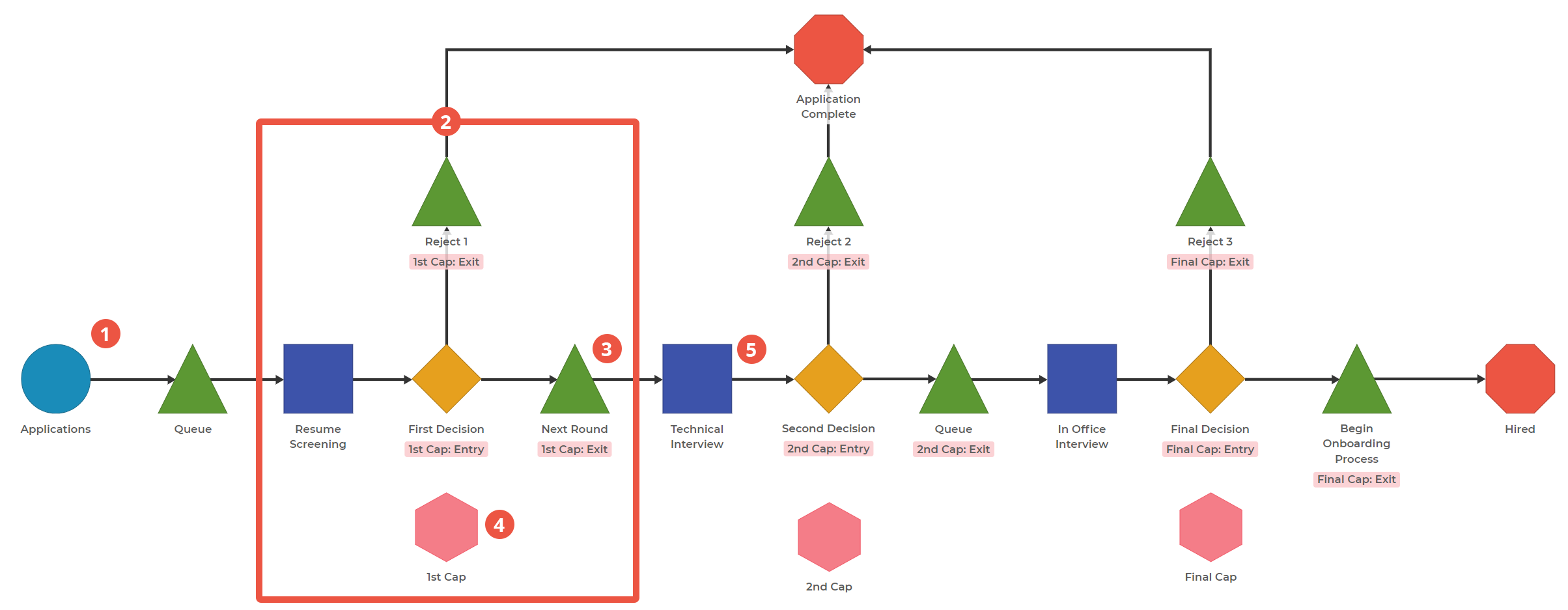Human Resource Interview Process
Human Resource Interview Process: This process highlights the ability to limit the work in progress using multiple Core Pull WIP caps.

0. There is one item in this model: Applicants
1. Applicants are generated and enter the process. Applications are entering the hiring process at some rate. From here, each application will move through the process.
2. Each Interview roughly follows the same process. There is some Activity, like screening or interviewing, and the applicant is either rejected or moves on to the next step.
3. Limit the number of users who can move on to each step. Because only a few applicants should be scheduled for the next round, limit the number of those applicants by using a cap on the queue block.
4. Prevent more users from moving into the process when full. We'll prevent applicants from moving through the process when each step is at capacity. This action will eventually cause a large number of applicants to stack up in Queue, but it's better than overprocessing for individuals your process can't support.
5. Scope your model appropriately. While this Activity Block is called "Technical Interview," the actual time modeled by this block can vary by the scope you wish to accomplish. This single block can account for just the actual interview, where an applicant talks to another individual. On the other hand, this single block can instead represent the entire time for the back and forth of scheduling the interview, the interview itself, and the evaluation of the applicant. Either interpretation can be correct, but it depends on what questions you're trying to answer overall.
Overall, mapping a process can highlight where there might be some waste in the system. However, modeling a process has some flexibility depending on the goal you have with your model. You might want to show how improvements to the process affect the final output or highlight areas where you might want to raise or lower caps.
Was this helpful?
